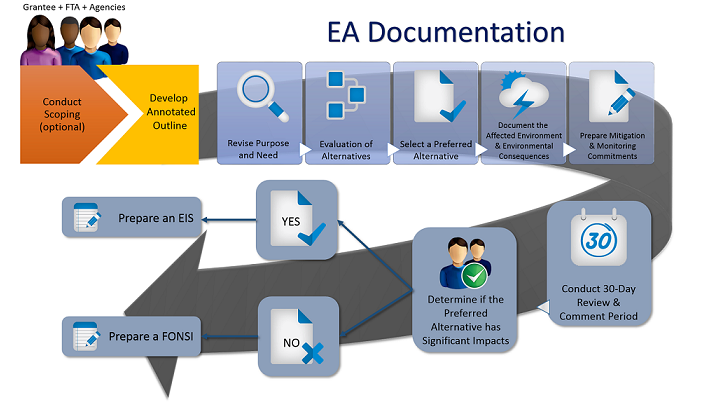EA Documentation

As shown in the above figure, the following steps comprise the EA documentation process. Where available, more information can be found by clicking each link.
- Conduct Scoping
- Develop Annotated Outline
- Revise Purpose and Need
- Prepare Evaluation of Alternatives
- Select a Preferred Alternative
- Document the Affected Environment and Environmental Consequences
- Prepare Mitigation and Monitoring Commitments
- Conduct 30-day Review Period for the EA
- Determine if the Preferred Alternative has Significant Impacts
What should be in an Environmental Assessment document?
In accordance with 40 CFR 1508.9, an EA document at a minimum should contain brief discussions of the following:
- The need for the proposal
- Alternatives, which at a minimum include the preferred build alternatives and the No Build Alternative;
- The environmental impacts of the proposed action and alternatives; and
- A list of agencies and persons consulted.
In streamlining EA documents, the document should be substantially shorter and more focused than in past practice as set forth in “Forty Most Asked Questions Concerning CEQ’s National Environmental Policy Act Regulations”and the CEQ Memorandum for Heads of Federal Departments and Agencies: Improving the Process for Preparing Efficient and Timely Environmental Reviews under the National Environmental Policy Act, 2012.For most issues and actions, in-depth detail should be provided in appendices which are incorporated only by CD. The length of the EA depends on the number of impact issues. A lengthy EA may be appropriate for a complex proposal (Q.36b). FTA will set objectives for the length of the EA sections during the development of the annotated outline.
Typical Process for an Environmental Assessment
The following flowchart shows the process of preparing an EA from initiation to completion.
